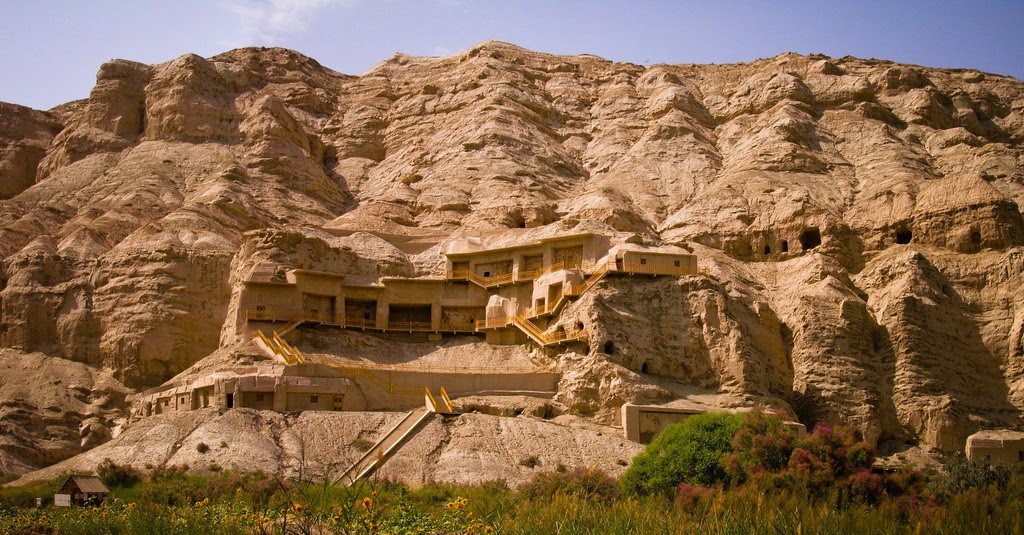The Kizil Caves
are a set of Buddhist rock-cut caves located near Kizil
Township in Baicheng County 75 km by road) west of Kucha.
This area was a commercial hub of the Silk Road .
Cut the third century to eight or ninth century, it is the earliest Buddhist
art treasure trove in China
The Kizil Thousand-Buddha
Caves are corridor of murals
surpassing other existing caves in China Bamian Caves
and the murals suggested the influence of Gandhara arts, a Buddhist visual art
prevailing in today's Northwestern Pakistan and Eastern
Afghanistan in First Century B.C. and Seventh Century A.D. The
written documents discovered here were composed in Tocharian B language, a branch
of the Indo-European language family that originated in central Asia during the first millennium.
The Kizil Thousand-Buddha
Caves Kizil Thousand-Buddha
Caves
The murals in the Kizil Thousand-Buddha
Caves are reputed as "The most
beautiful murals in Central Asia ". They
are found in 81 caves with a total area of more than 10,000 square meters
(11,960 yards). The diamond grid pattern is the most impressive feature. There
is a story about Buddha's reincarnation in every gird. Each story was portrayed
by a single picture instead of a series of pictures as in Mogao Grottoes.
Besides the themes
of Buddha, Bodhisattva, Arhat, Flying apsaras, and Buddhist fables, a variety
of depictions on production and daily life, farming, hunting, pastures, riding,
mountains and rivers in the West Region, animals, birds and ancient
architectures can also be seen in the Kizil Thousand-Buddha
Caves Music Cave
For more
information, please visit http://top-chinatour.com





No comments:
Post a Comment